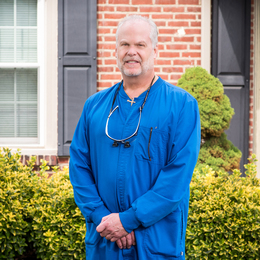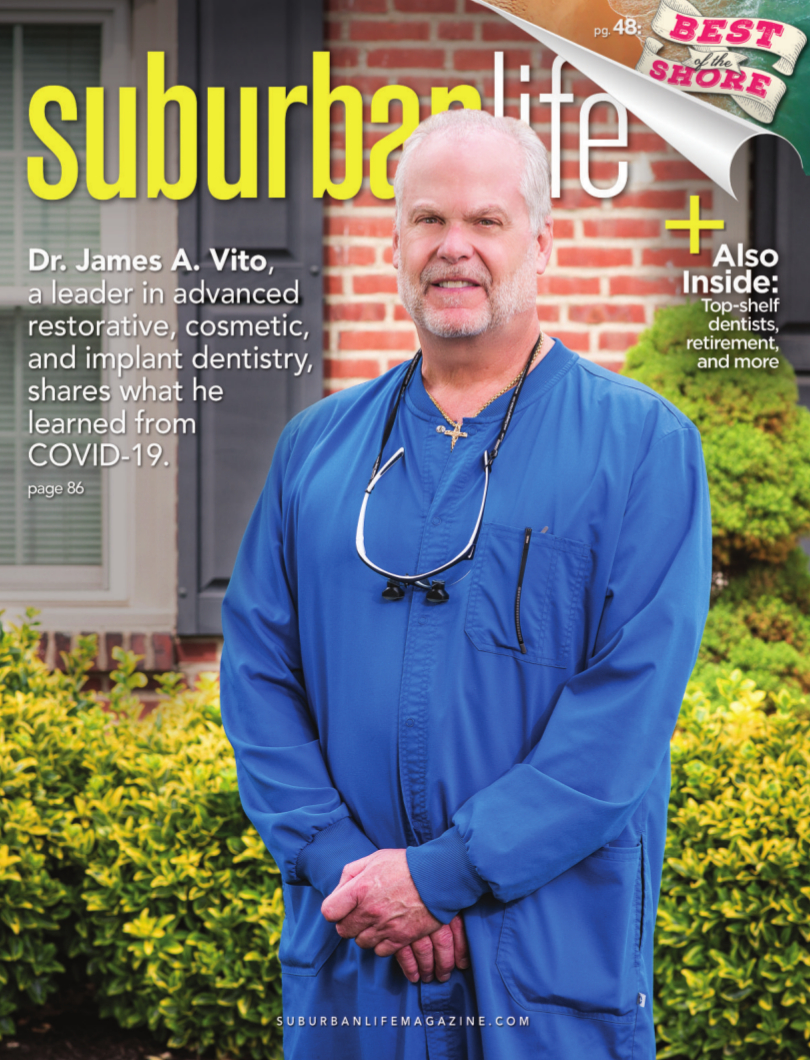
What I Learned from COVID-19
Dr. James A. Vito, a leader in advanced restorative, cosmetic, and implant dentistry, shares what he learned from COVID-19.
The last year and a half have been interesting to say the least. A worldwide pandemic, a contentious election, and a COVID-19 vaccine rollout not without its problems. Questions arose as to whether to get vaccinated with emergency-use-authorization vaccines, to wear a mask or not to wear a mask, and a lot of people recover from it so why bother with mitigation factors? As of early June 2021, the United States has had 34,306,585 positive cases since the virus started, and 614,745 deaths due to COVID-19 and its variants.
As a dentist during the shutdown of 2020, I reflected on what would serve my patients best and started a weekly newsletter/blog to educate my patients about COVID-19, its variants, and what we all can do to help each other through. I did so because the news was doing a poor job of reporting the facts and focusing on reporting their respective agendas, which resulted in a lot of confusion, misinformation, and mistrust. For my weekly updates I relied on scientific facts and the science that could be verified by more than one source, and was not based on a TV anchor’s agenda or one of their paid sources to support to their agenda. I used the National Institutes of Health, Johns Hopkins, Harvard Health, JAMA: The Journal of the American Medical Association, and other reputable sources to send information to my patients, who I am told then shared it with their friends and family.
Some of the highlights of this newsletter and blog are as follows:
“Is it safe to go to the dentist?” A dental office environment is used to dealing with deadly diseases. Since the AIDS epidemic in the 1980s, dental offices have maintained high sterilization and disinfection protocols not only for us as clinicians but for our patients as well. Many of the disinfectants we utilize between patients easily kill the COVID-19 virus, but it was the virus’s lingering airborne component that neither the U.S. Centers for Disease Control and Prevention nor the American Dental Association initially addressed. Discussions with fellow dentists led me to revamp our HVAC system with HEPA filtration, UV light filters to kill airborne particles, and an air scrubber. This, combined with placing a HEPA filter in each room filtering the air throughout the office several times an hour, addressed the airborne nature of the virus and its variants. We also maintained the strict cleaning protocols we have had in place for making sure the office is safe for each patient visit.
Additional protocols, as per the CDC, of patients treating their hands with hand sanitizer, and temperature and pulse oxygen checks at each visit were also employed, and still are to this day. I am happy to report that none of our patients has contracted COVID-19 in a dental setting. My staff and I have been fully vaccinated since February 2021, and I am happy to report that about 97 percent of our patient pool is fully vaccinated.
“How contagious is the COVID-19 virus?” The COVID-19 virus is highly contagious. The variants of COVID-19 are even more so. The latest variant, the Delta variant from India, is 40 percent stronger than the original COVID-19. It is currently in 42 states and represents 20 percent of positive infections—and those numbers are growing.
Once COVID-19 or one of its variants is aerosolized, it can travel up to six feet and can remain suspended in the air for up to three hours. Enclosed environments (indoor activities) are being hit hard by restrictions because restaurants and bars without the proper ventilation, social distancing, etc., can become super-spreader events, especially among the unvaccinated. The numbers were way down last summer, and then we started seeing spikes when people moved indoors for the holiday season, from Thanksgiving through New Year’s Day. Then we saw another recent spike following spring break 2021. COVID is not seasonal. It is a year-round virus.
COVID-19 affects multiple organs but primarily the lungs. It is fatal in a lot of cases, as the numbers bear out: more than 614,000 people dead from this virus in 16 months. At this rate, the number could reach 1 million Americans dead by the end of the year. This is real and it is not going away.
“The vaccine was created so fast. Is it effective?” The flu, the common cold, SARS, and MERS are all coronaviruses. The research that has been done with these other coronaviruses is what has led to the quick development of the COVID-19 vaccines. In the simplest terms, it is like building a car. You already have the car frame; you are just placing a different body type on it. For example, Toyota makes the Camry, Corolla, and Lexus, and all three share the same frame but have different body types that fit over the chassis.
All three vaccines—Moderna, Pfizer, and Johnson & Johnson—are highly effective and safe. The vast majority of those vaccinated have had minor adverse effects. Less than 0.1 percent have had more intense transient side effects that resolve quickly. No medication, including vaccines, is 100 percent foolproof, but neither is waking up each day expecting to put two feet on the ground. As of the date of this writing, 60 percent of Pennsylvanians are fully vaccinated. In the United States, which has a population of 330 million, 46 percent are fully vaccinated and 54 percent are partially vaccinated—numbers that are on par with the flu vaccine. This is why approximately 65,000 people die from the flu every flu season.
“If I get the vaccine, can I still get COVID?” According to the science, the simple answer is yes, but the symptoms will be very minor, you won’t end up in the hospital, and you will not die. We should worry about the variants, which are mutations of the original COVID-19, that may be harder to neutralize. This is why it is important that we all get vaccinated as soon as possible. The sooner we reach herd immunity, which is 90 percent or more, the better control we will have over COVID-19 and the less control COVID-19 will have over our lives.
Scientists are hoping for 60 to 70 percent as a country, but we are only at 46 percent so far. This shortfall may result in a lingering problem for years to come, especially with the new variants that will be able to mutate over time and develop a resistance to the vaccines. Unlike the flu, which is seasonal, COVID-19 has turned out thus far to be a year-round event, which is why it is important to get vaccinated and get to that 90 percent goal.
“Should I still wear a mask?” Besides the vaccine, wearing a mask is still the most effective tool in the toolbox. It is very helpful protection against COVID-19, especially in large groups of people outside your personal bubble, some of whom may be unvaccinated. To be effective, the mask needs to be at least three-ply. If you do not have a three-ply mask, then you need to double mask to get to that level. Anything thinner, such as the gaiter masks or masks that are made from T-shirt material or that do not form a tight seal, are not effective. A mask must fit tight and form a seal around your nose and mouth to be effective.
I hope this has been helpful and answered any questions you may have with respect to COVID-19, the vaccine and its effectiveness, and the importance of taking an active stance against this virus based on the science. We all must do our own homework with respect to the virus. Please avail yourself to it. Research reputable medical sites on your own, and do not rely on the news media, Twitter, Facebook, or other social media posts for your medical information. Be an educated consumer and make the right decision for yourself, your family, and your community.
James A. Vito, D.M.D.
Advanced Restorative, Cosmetic & Implant Dentistry
523 East Lancaster Ave.
Wayne PA 19087
(610) 971-2590
Photograph by Jeff Anderson
Published (and copyrighted) in Suburban Life magazine, June 2021.



